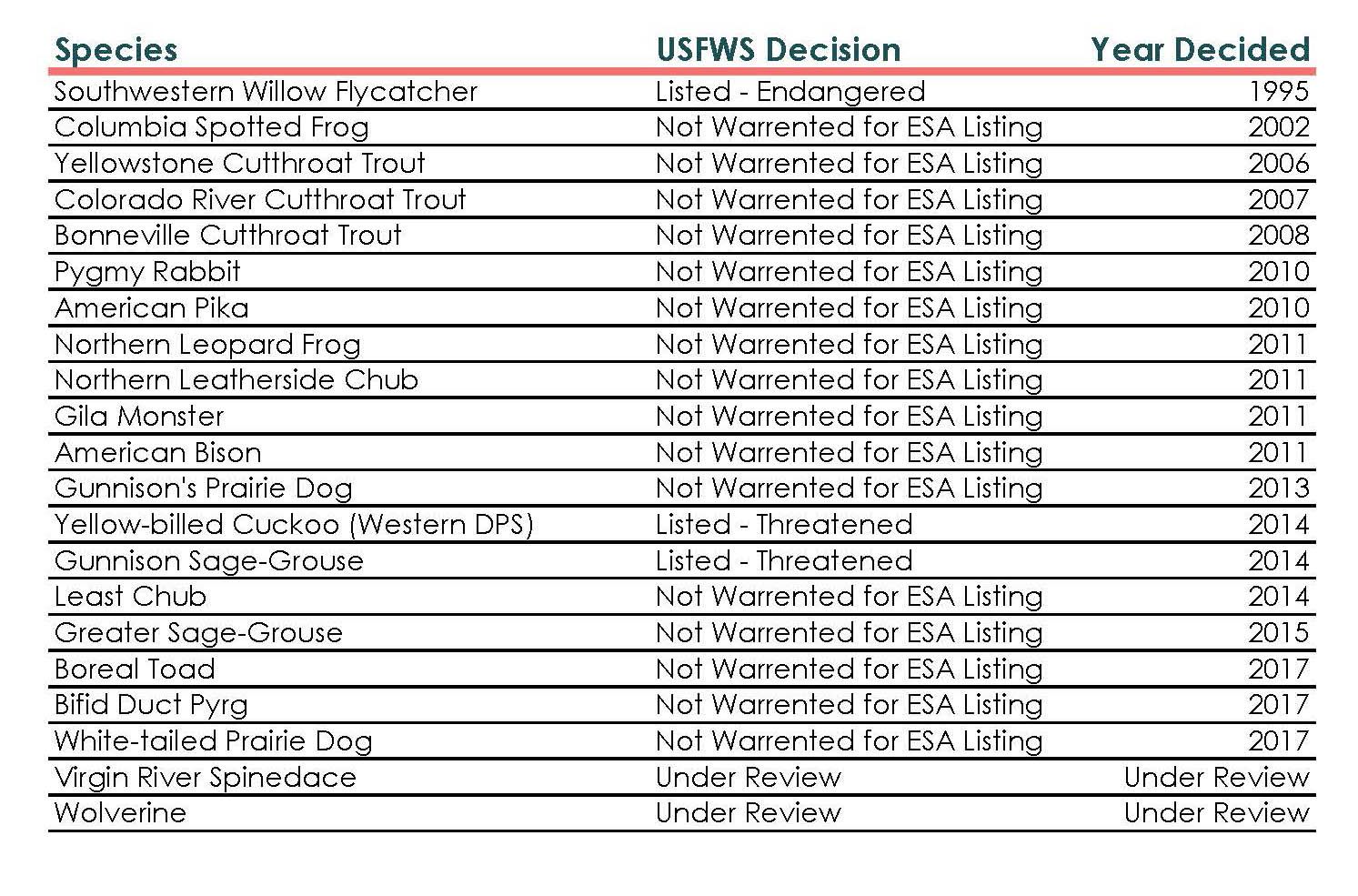Utah’s Efforts and Successes at Preventing ESA Listings
Author
Published
6/4/2019
ISSUE
Congress passed the Endangered Species Act (ESA) in 1973 to protect animals and plants that are threatened or endangered of becoming extinct and to protect the habitat in which they live. On one hand, the Act is revered because it is supposed to prevent species extinction. On the other, it draws fire because it is misleading, impractical, affects economic development and a host of other things.
The Act authorizes the United States Secretary of the Interior to allocate funds to states for assisting in the recovery of threatened and endangered species. The law also created the Cooperative Endangered Species Conservation Fund to award grants to states for voluntary projects on non-federal lands. The Act mandates that states adopt their own endangered and threatened species management programs subject to approval by the federal government. The Act requires states to do the following:
- Conserve the species of fish or wildlife determined by the state or federal government to be endangered or threatened
- Create conservation programs for all species of fish or wildlife identified by the federal government as endangered or threatened and provide detailed plans for these programs to the U.S. Department of Commerce
- Be authorized by the U.S. Fish and Wildlife Service to conduct investigations to determine the status and requirements for survival of resident species of fish and wildlife
- Be authorized before establishing programs to acquire land or aquatic habitats for conserving endangered or threatened species
UTAH’S PLAN
Utah’s Department of Natural Resources has been a state leader in working closely with many external partners to proactively conserve Utah’s wildlife. One of the primary goals of these partnerships is to prevent the need for species listing under the ESA. Species listed as threatened or endangered under the ESA often have extremely low population numbers, and their recovery can be difficult. A listing also increases the regulatory burdens that affect state and local communities.
As of July 2016, Utah had 42 species—21 endangered species and 21 threatened species—listed under the federal Endangered Species Act (ESA). Of these, 17 were animal species and 25 were plant species. Over the years, the vast majority have received “Not Warranted” decisions because of the Utah’s effective partnerships and ongoing conservation efforts – see Chart 1.

Delisting is the removal of species from the federal lists of endangered and threatened wildlife and plants. Down-listing is the reclassification of a species from Endangered to Threatened. Delisting and down-listing actions result from successful recovery efforts. To delist a species, the United States Fish and Wildlife Service must determine that the species is not threatened based on a number of factors, such as population size, recruitment, stability of habitat quality and quantity, and control or elimination of the threats.
Utah farmers and ranchers are concerned that threatened and endangered species protection is interfering with their ability to manage farm lands, eroding land owners’ private property rights and diverting unprecedented amounts of private resources that are needed for other purposes.
While Utah’s partners have achieved remarkable results in the last few decades, we cannot afford to become complacent. The scope of work required to proactively conserve Utah wildlife and habitat, avoid additional ESA listings and recover species already listed is far beyond the capacity of any single organization. It requires continued collaborative, creative solution-based partnerships.
Want more news on this topic? Farm Bureau members may subscribe for a free email news service, featuring the farm and rural topics that interest them most!
